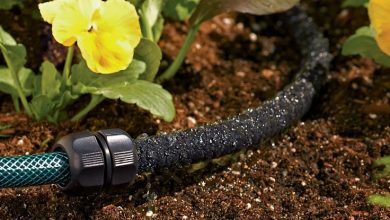Spots on the leaves of plants | Why they appear and how to eliminate

Today we will talk about the spots on the leaves of plants. We will see what leaf spots are on vegetables, why they appear and how to identify pests and diseases that cause yellow leaves with spots, brown spots or necrosis, leaves with white spots, red spots, etc.

If you are growing a garden or any type of vegetable, surely you have had plants with spots on the leaves at some time. Today we will see why this problem occurs and how to cure the leaves of plants in an ecological way.
Causes of spots on the leaves of plants
The first thing you should know is that there are many types of pests and diseases that can attack vegetables, so there are also many types of leaf spots. In today’s post we will talk about the most common diseases and pests that produce leaves with spots on garden plants. Let’s see them!
Fungi that cause leaf spots
The appearance of white spots on the leaves is one of the most characteristic symptoms of some types of fungi. First, white spots appear on the leaves and then they turn into a kind of white powder (if you touch these white spots and you can easily remove or clean them, the disease is very clear… they are fungi!).
One of the most common fungi in the garden that causes this symptom of white spots on the leaves is powdery mildew.

Powdery mildew (known as ash or white mal) is a very common fungus in cucurbits such as pumpkins, courgettes, cucumber, melon, chayote… But it can also affect other plants in the garden such as tomatoes, potatoes, vines, chard or spinach. If you think your plants have this problem, you can find some advice in the post « Oidium in the garden, how to identify it and combat it».
In addition to powdery mildew, another of the typical garden fungi, Botrytis cinerea, also produces spots on the leaves and fruit of garden plants.

In this case, brown spots or necrosis first appear on the leaves. The tissue in which it develops darkens and sometimes softens. Over time, a layer of grayish or whitish mold will appear on these areas and on the ripe fruits.
There are other fungal diseases that produce black spots on the leaves, brown spots or dry areas on the leaf, reddish pustules, etc. such as cercospora, rust or alternaria fungi.
In the post about common fungi in garden plants you have more details and photos of the fungi that cause spots on the leaves. Also in the article on ecological fungicides to eliminate fungi and in other entries in the category «Pests and diseases» there is more information on the diseases caused by fungi in the leaves of plants.
Yellow and spotted leaves
If small yellow spots with irregular or polygonal shapes appear on the leaves, it is very possible that your plant has a virus. Horticultural viruses cause diseases whose most common symptoms are yellow or light green spots or mosaics all over the leaf.

Viruses are a serious problem in garden plants since these diseases are not cured. You will have to remove all the plants and thoroughly disinfect the tools and everything that was in contact with the diseased plants, including the soil (if there are plants or residues infected with the virus, it is possible that during the following season the plants will get sick again and you will have also to tear them off).

In the post « Viruses in garden plants: what they are and what to do » you have some tips to identify and prevent plant viruses. You may also find it useful and easy to disinfect the soil through solarization, an ecological method to eliminate viruses and parasites from the soil.
Spots on leaves and leaves that lose color
If you do not clearly see well-defined spots, but rather the entire leaf turns brown or light green with small white or yellow dots, it may be that what has attacked your plant is a mite infestation.
Mites such as the red spider, the yellow spider or the white spider feed on the sap of the leaves and reduce photosynthesis, so the plant becomes very weak and the leaves are no longer green. In addition, little by little they cover everything with their spider web (so tiny that it can also look like a dust that covers the leaves) and this makes photosynthesis even more difficult and the plant dies little by little.
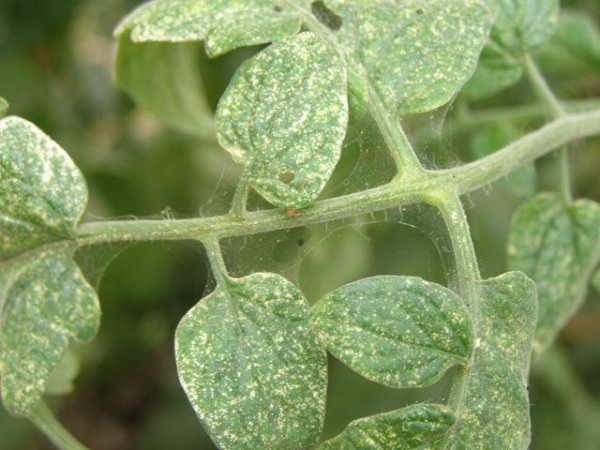
You should inspect if you see tiny spiders scurrying on the underside of the leaves or in the substrate… and also if you see the characteristic spider web. If so, and your plants are starting to show these symptoms, you can use a broad-spectrum insecticide, one specifically for mites, or try these organic remedies for pests that you can prepare at home and that are very effective against spider mites.
Leaf tunnels and star-shaped spots
Another of the pests that causes spots on the leaves of tomatoes and other vegetables are leaf miners. There are several types of insects, most of them flies or dipterans, which lay their eggs inside the leaves (between the upper and lower sides) and produce spots with irregular shapes, like paths or thin lines on the leaves.
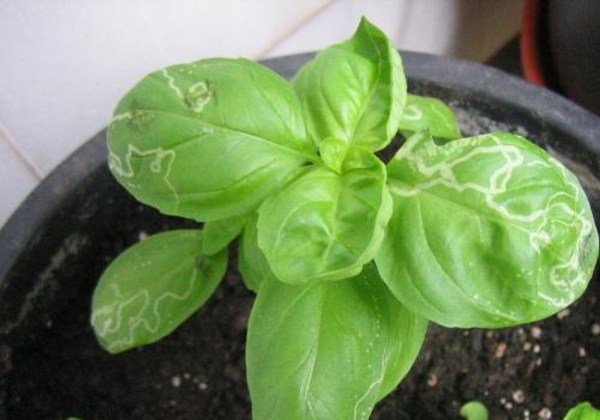
When they hatch, the larvae remain inside the leaf. They move and feed on the leaf causing small white or translucent tunnels in the leaf, a typical symptom of leaf miners.
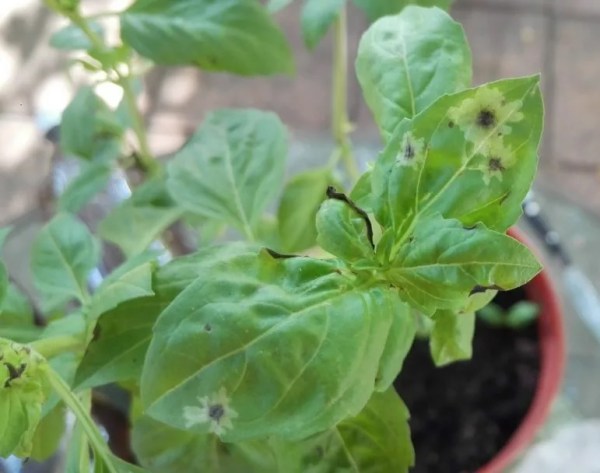
There are also other types of miners, very typical of aromatic plants such as basil, which cause star-shaped spots on the leaves.
Leaves stained due to lack of nutrients
In addition to the pests and diseases we have seen, there is another common problem that can cause spots on the leaves of plants: lack of nutrients.
In this case, it is not about well-defined spots, but a large part of the leaf is colored (or discolored). Depending on the nutrient that the plant needs, the leaves turn one color or another, and may appear yellow or chlorotic leaves, brown leaves, leaves with a white or yellow edge, with purple or reddish edges, etc. In the post about lack of nutrients in plants there is more information about this problem.

I hope you found this post about spots on the leaves of garden plants useful. Surely some of you who read our posts (more experienced than me in the care of the garden) can give us advice or solutions to fight against pests and diseases that cause spots on the leaves.
I encourage you to give us your experience in the comments so that we can all learn new things
References
- Sherf, AF & MacNab, AA, 1986. Vegetable diseases and their control. A Wiley-Interscience publication. ISBN 0-471-05860-2.
- Barnazá, M., 1998. Analysis of plants and visual symptoms of nutrient deficiencies. Agronomy faculty. University of the Republic. Montevideo, Uruguay.
- Pariona, D. et al., 2001. Diseases in vegetables. Manual RI nº 5 of the National Institute of Agrarian Research (INIA). Ministry of Agriculture and Irrigation of Peru.
- Soler-Salcedo, E. et al., 2006. Colonization, feeding behavior and damage production in spider mites Tetranychus urticae and T. turkestani (Acari, Tetranychidae). Plant Health Bulletin. Plagues, nº 32, p. 523-534.
- Rossini, M. et al., 2010. Most important diseases of the main horticultural crops in the Patagonia Region. Ed. National Institute of Agrarian Technology (INTA Argentina).



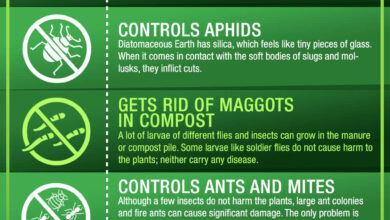
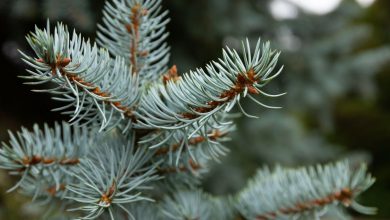
![Photo of Campanilla: [Cultivation, Irrigation, Care, Pests and Diseases]](https://www.complete-gardening.com/wp-content/uploads/2022/08/campanilla-cultivation-irrigation-care-pests-and-diseases-390x220.jpg)
